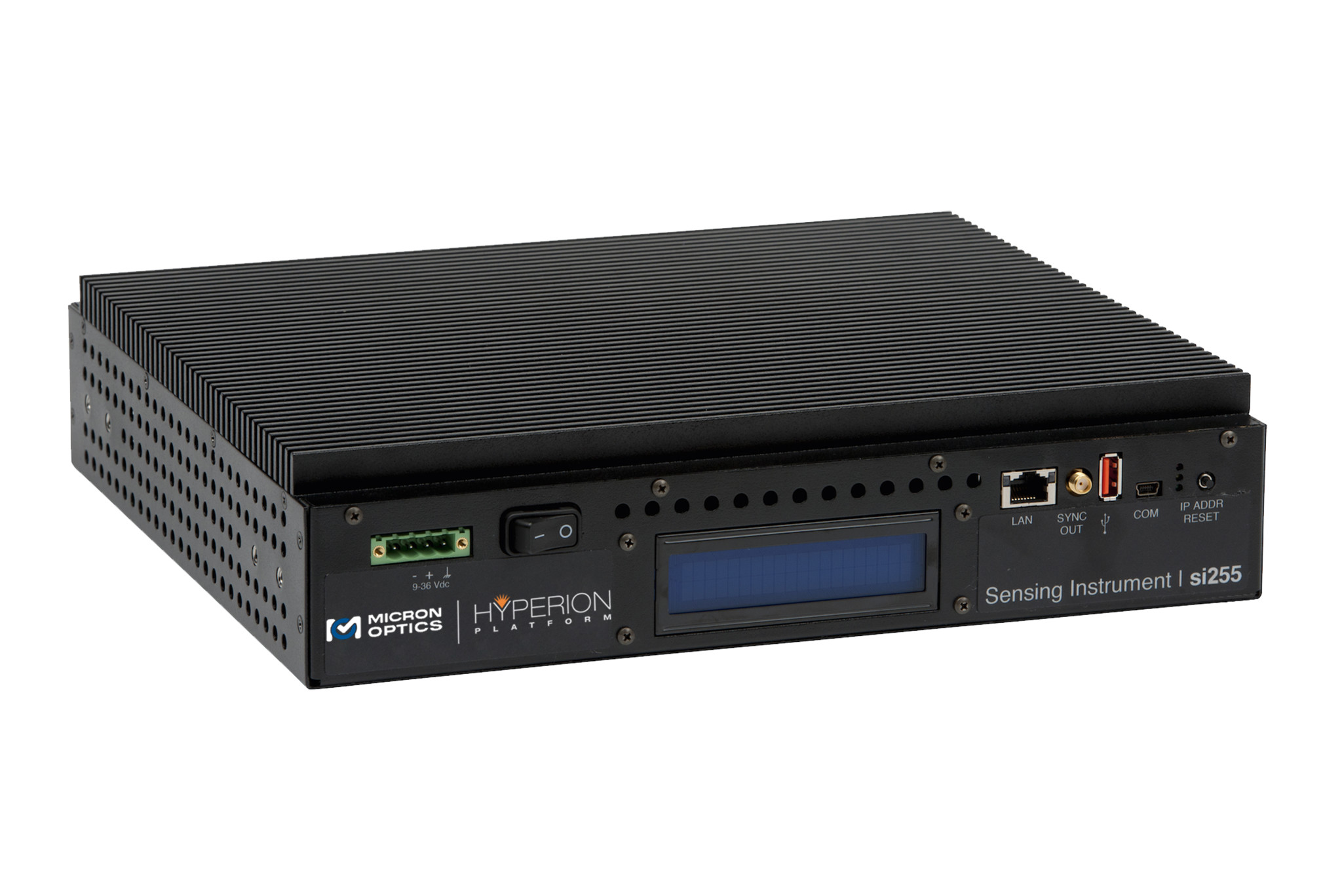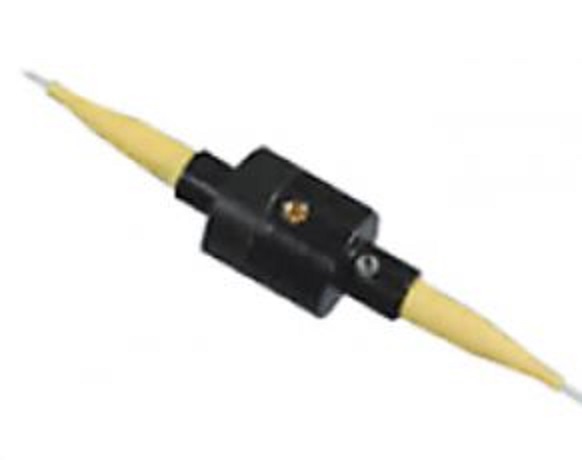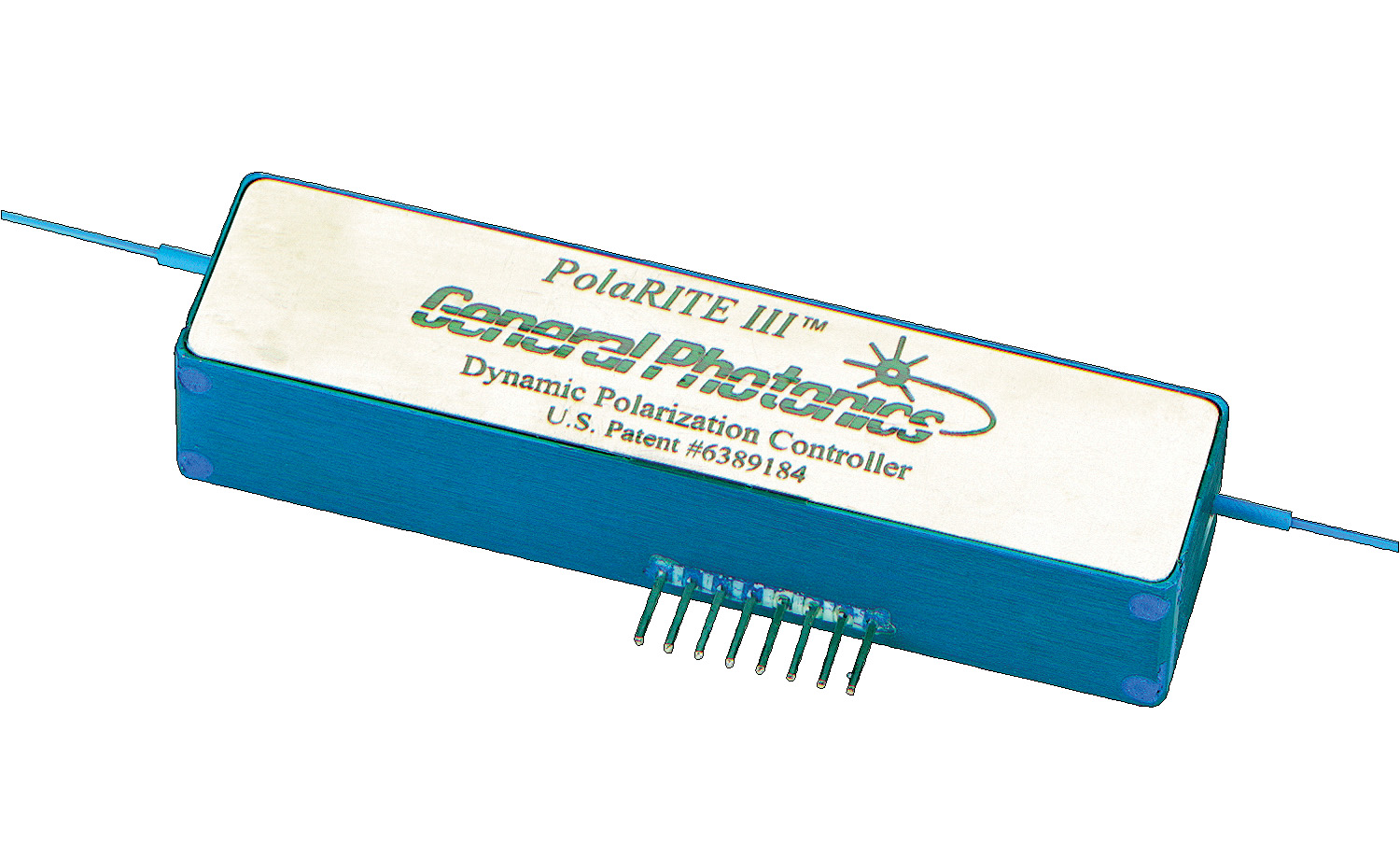Product information "HYPERION si255 Fiber Optic Sensing Interrogator"
4-16 Channels; Dynamic Range 25 dB; Sampling Rate 100-1,000 Hz; Wavelength Range 1460-1620 nm; Wavelength Accuracy 1, 2 pm; Wavelength Stability 1, 3 pm; Optical Fiber Connectors LC/APC
Luna’s HYPERION si255 is an industrial-grade, fan-less fiber optic sensing interrogator. Featuring both static and dynamic full spectrum analysis, Luna’s HYPERION si255 robust, turn-key interrogator provides long-term, reliable and accurate measurements of nearly 1000 of Fiber-Bragg Gratings (FBGs) or extrinsic Fabry-Perot (FP) sensors on 16 parallel, 160 nm wide channels.
The si255 interrogator features an all new, high-power, low-noise, ultra-wide swept wavelength laser with guaranteed absolute accuracy on every scan which is realized with Luna’s patented Fiber Fabry-Perot filter and wavelength reference technology.
The all new HYPERION platform, on which the si255 is based, features new and groundbreaking capabilities including high-performance on-board DSP and real-time FPGA processing. This enables rapid full-spectrum data acquisition and flexible peak detect algorithms of Fiber Bragg Gratings (FBG), Long Period FBGs (LPG), Fabry-Perot (FP) and Mach-Zehnder (MZ) sensors with low-latency access to data for closed-loop feedback applications.
HYPERION static full-spectrum optical interrogators measure the full optical spectrum of the optical sensor signals and can be equipped with a NIST absolute reference cell. The performance of the static interrogator module is characterized by high dynamic range and high absolute wavelength accuracy.
The HYPERION platform is now compatible with the ENLIGHT sensing analysis software, which provides a single suite of tools for data acquisition, computation, and analysis of optical sensor networks. More information on the ENLIGHT software can be found in the downloadable datasheet. The HYPERION platform also includes a comprehensive fully supported application programing interface (API) and LabVIEW, Python, Matlab, and C++ examples.
Whether an application requires static or dynamic real-time acquisition or periodic monitoring, Luna offers the right instrument for the job. Proven to be an essential element in reliable, long-term sensing measurement installations, Luna’s sensing instruments have been installed in hundreds of challenging applications all over the world, including large-span bridges in China, earthquake monitors in California, oil platforms in Brunei and marine vessels in the North Sea.
Key Features:
- Full Spectrum at 1 kHz With 160 nm on up to 16 Parallel Channels Simultaneously, Eliminating the Need for Optical Switches
- Dynamic and Absolute Measurements of Fiber Bragg Gratings (FBGs), Long Period FBGs (LPGs), Fabry-Perot (FP) and Mach-Zehnder (MZ) Optical Sensors From Detailed Optical Spectrum
- Single and Continuous 25 dB Dynamic Range, Available to Each Sensor on Each Channel, Independent of Differential System Losses
- Modes: Enhanced Visibility (10 Hz), Standard (100 or 1,000 Hz), High Speed (5,000 Hz)
- Number of Parallel Channels: 4, 8, 16
- Wavelength Range: 1500 to 1620 nm
- Wavelength Accuracy / Stability: 1 pm/1 pm, 2 pm/3 pm
- Optical Fiber Connectors: LC/APC
- Data Verification Key Guarantees only Valid Output. Each Data Set is Calibrated and Verified Against any Potential Sources of System Error (Coming Soon)
- Proven Reliability and Longevity of the Luna Swept Wavelength Source, With Over 100 Million Hours Logged Since 2000
- Dimensions: 307 x 274 x 69 mm
Applications: Fiber Optic Sensing of – Oil & Gas; Medical Devices; Industrial Measurements; Energy; Structures; Security; Aerospace







